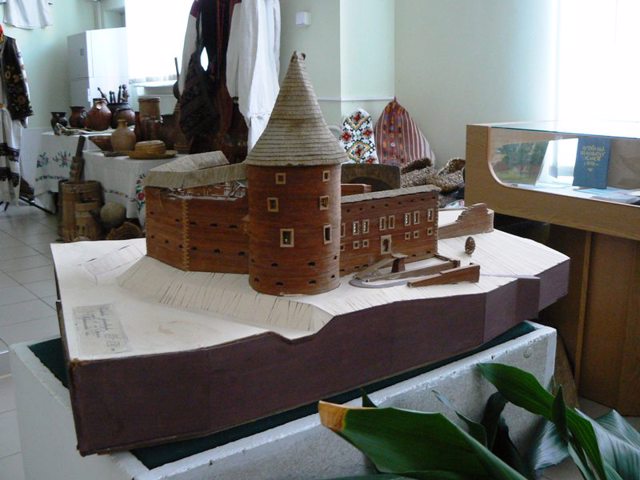Functional temporarily unavailable
General information about Buchach
The city of Buchach is one of the most picturesque regional centers of Podolia, located on the high banks of the river. Strips. It has been known since 1397 as the property of the Buchatskys of the Lithuanian magnates. In the XVI century. passed to the Golskys, then to the Pototskys, who built a castle in the Renaissance style on the site of an older one (ruins have been preserved). In 1672 in Buchach under the "Golden Linden" tree, which was preserved on the road to the village. Sokolov, a peace treaty was signed between the Ottoman Empire and the Commonwealth, known as the "Buchach Peace". The border passed along the Strip and divided the city into two parts - eastern (Turkish) and western (Polish). The Turkish occupation lasted 11 years. In 1683 the Polish king Ja ...
The city of Buchach is one of the most picturesque regional centers of Podolia, located on the high banks of the river. Strips. It has been known since 1397 as the property of the Buchatskys of the Lithuanian magnates. In the XVI century. passed to the Golskys, then to the Pototskys, who built a castle in the Renaissance style on the site of an older one (ruins have been preserved). In 1672 in Buchach under the "Golden Linden" tree, which was preserved on the road to the village. Sokolov, a peace treaty was signed between the Ottoman Empire and the Commonwealth, known as the "Buchach Peace". The border passed along the Strip and divided the city into two parts - eastern (Turkish) and western (Polish). The Turkish occupation lasted 11 years. In 1683 the Polish king Jan III Sobieski visited the city. The heyday of Buchach in the 18th century. associated with the activities of the Potocki magnate family, to whom the city owes much of its historical buildings. At the expense of the Pototskikhs, with the participation of the outstanding architect Meretin and the famous sculptor Pinzel, many temples and the majestic town hall were built, which is now the decoration of the city. Buchach became the center of education in the beginning. XIX century, when a gymnasium was founded at the Basilian monastery. The writer, Nobel Prize winner Shumel Yosef Agnon was born here. The city is famous for the production of Buchach brandy, the foundation of which was laid by Count Pototsky.
Місто Бучач - одне із наймальовничіших міст Поділля розташоване на високих берегах річки Стрипи. Відоме з 1397 року як власність литовських магнатів Бучацьких. У XVI ст. перейшло до Гольських, потім до Потоцьких, які побудували замок в стилі ренесансу на місці більш давнього (збереглися руїни). В 1672 році в Бучачі під деревом "Золота Липа", яке збереглося при дорозі в с. Соколів, був підписаний мирний договір між Османською імперією та Річчю Посполитою, відомий як "Бучацький мир". Кордон пройшов по Стрипі й розділив місто на дві частини - східну (турецьку) і західну (польську). Турецька окупація тривала 11 років. У 1683 році в місті побував польський король Ян III Собеський. Розквіт Бучача в XVIII ст. пов'язаний з діяльністю магнатської родини Потоцьких, яким мі ...
Місто Бучач - одне із наймальовничіших міст Поділля розташоване на високих берегах річки Стрипи. Відоме з 1397 року як власність литовських магнатів Бучацьких. У XVI ст. перейшло до Гольських, потім до Потоцьких, які побудували замок в стилі ренесансу на місці більш давнього (збереглися руїни). В 1672 році в Бучачі під деревом "Золота Липа", яке збереглося при дорозі в с. Соколів, був підписаний мирний договір між Османською імперією та Річчю Посполитою, відомий як "Бучацький мир". Кордон пройшов по Стрипі й розділив місто на дві частини - східну (турецьку) і західну (польську). Турецька окупація тривала 11 років. У 1683 році в місті побував польський король Ян III Собеський. Розквіт Бучача в XVIII ст. пов'язаний з діяльністю магнатської родини Потоцьких, яким місто в значній мірі зобов'язане своєю історичною забудовою. На кошти Потоцьких, за участі видатного архітектора Меретина і прославленого скульптора Пінзеля були побудовано багато храмів і велична ратуша, яка є тепер окрасою міста. Центром освіти Бучач став на початку XIX ст., коли при василіанському монастирі була заснована гімназія. Тут народився письменник, лауреат Нобелівської премії Шумель Йосеф Агнон. Місто відоме виробництвом коньяків торгової марки "Бучач", основу якого заклав граф Потоцький.
Сплануй своє перебування у Buchach
What to see and where to go in Buchach
Tourist attractions and museums of Buchach

Buchach Museum of Local Lore
Museum / gallery
The museum is located in the heart of the city, near the town hall. The archeological exposition presents objects from the times of Trypillia culture. The ethnographic exhibition tells about the life of peasants of the end of the XIX century. In addition to the history of the city and the district, there is an exposition dedicated to the work of the outstanding sculptor Ivan Georg Pinzel, who lived and worked in Buchach for a long time. The model of Buchach Castle is also of interest.

Memorial Museum of Political Prisoners
Museum / gallery
The Vasyl Stus Memorial Museum for Political Prisoners was opened in Buchach in 1990 in the basement of a former KGB building, where a pre-trial detention center was located during the Soviet era. The exposition presents documents, photographs and personal belongings related to the events of the OUN-UPA liberation struggle and Stalinist repressions. It has been established that more than 1,500 residents of the district died at the hands of Stalin's executioners in those years. Some of the dead were buried in the basements of the Church of the Intercession.
Reviews Buchach
Geographical information about Buchach
| {{itemKey}} | {{itemValue}} |
|---|---|
| Region |
Ternopil |

